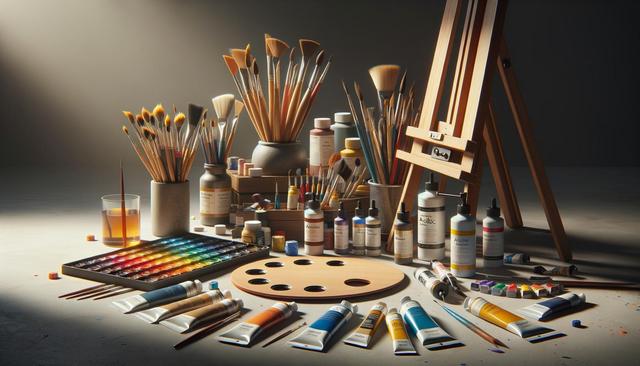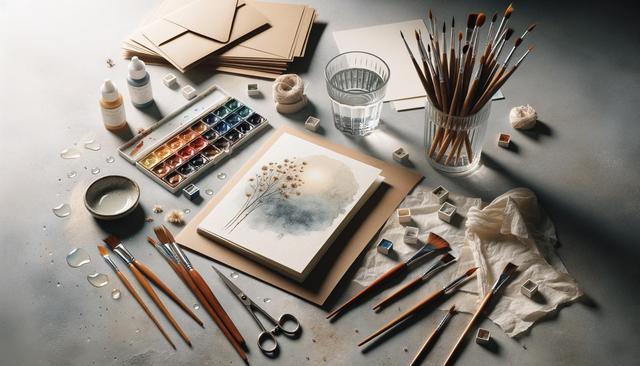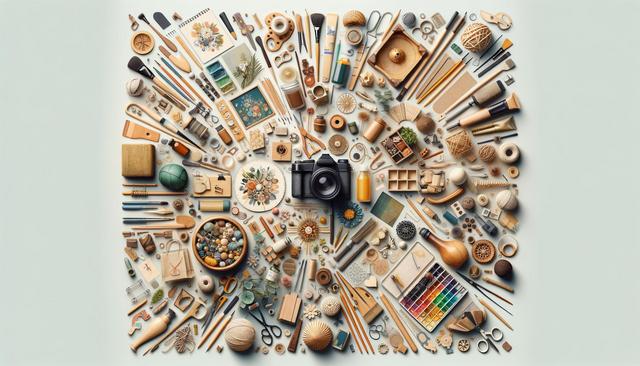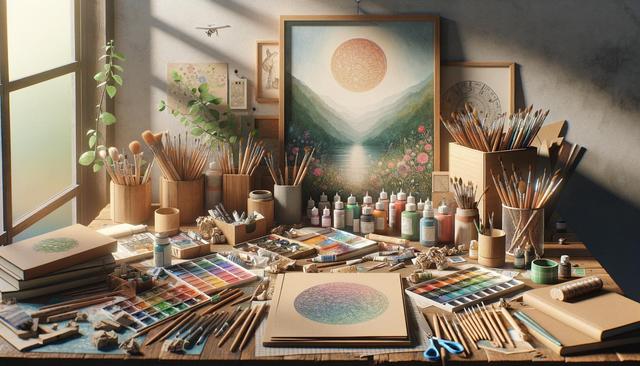Acrylic vs. Oil Paints: Choosing the Right Medium for Your Style
Exploring the world of art supplies can be a delightful journey, especially when it comes to choosing between acrylic and oil paints.

Understanding Acrylic Paints
Acrylic paints are a popular choice among artists for their versatility and ease of use. These paints are water-based, which means they can be easily diluted with water and cleaned up with soap and water. One of the main advantages of acrylic paints is their quick drying time. This allows artists to work rapidly and make changes without waiting long periods for the paint to dry. Acrylics are ideal for artists who like to layer their colors or work in a fast-paced manner. Another benefit of acrylic paints is their flexibility. They can be applied to a variety of surfaces, including canvas, paper, wood, and even fabric. This makes them a great option for artists who enjoy experimenting with different textures and materials. However, their fast drying time can also be a disadvantage for artists who prefer to blend colors seamlessly, as the paint can dry before the desired effect is achieved.
The Richness of Oil Paints
Oil paints have been used by artists for centuries and are renowned for their rich textures and vibrant colors. Unlike acrylics, oil paints dry slowly, giving artists ample time to blend colors and create smooth transitions. This slow drying time allows for more intricate detailing and the development of complex layers. Oil paints are often chosen by artists who want to achieve a high level of realism in their work. One of the key characteristics of oil paints is their ability to maintain color vibrancy over time. The pigments used in oil paints are often more concentrated than those in acrylics, resulting in a depth of color that can last for generations. However, the use of oil paints requires more preparation and cleanup, as they need to be mixed with solvents and mediums to achieve the desired consistency. This can be a consideration for artists who prefer a more immediate and straightforward painting process.
Choosing the Right Medium for Your Style
When deciding between acrylic and oil paints, it’s important to consider your personal style and the type of artwork you want to create. If you prefer quick-drying paints that allow for spontaneous creativity and layering, acrylics might be the right choice for you. Their versatility and ease of use make them a popular choice for beginners and experienced artists alike. On the other hand, if you enjoy taking your time to blend colors and create subtle gradients, oil paints might be more suitable. The rich texture and depth of oil paints can enhance the realism and emotional impact of your artwork. Additionally, consider the surfaces you plan to paint on. Acrylics, with their adaptability, are well-suited for a wide range of surfaces, while oils are traditionally used on canvas or prepared wood panels.
Exploring Techniques and Styles
Both acrylic and oil paints offer a multitude of techniques and styles for artists to explore. With acrylics, you can experiment with techniques such as glazing, dry brushing, and impasto. Their quick drying time allows for easy layering and texture building. Some artists even incorporate mixed media into their acrylic paintings, using materials like paper, sand, or fabric to add depth and interest. Oil paints, with their slow drying time, are perfect for techniques like wet-on-wet, scumbling, and chiaroscuro. These methods can create a sense of light and shadow that brings a piece to life. Additionally, oil paints can be used to create detailed portraits or expansive landscapes, capturing the subtleties of light and color.
Conclusion: Finding Your Artistic Path
In the end, the choice between acrylic and oil paints comes down to your personal preferences and artistic goals. Both mediums offer unique advantages and can be used to create stunning works of art. Whether you’re drawn to the vibrant immediacy of acrylics or the timeless elegance of oils, exploring the possibilities of each medium can enhance your creative journey. Consider experimenting with both to discover which aligns best with your artistic vision. By understanding the characteristics and potential of each medium, you can make informed decisions that reflect your style and help you grow as an artist.





